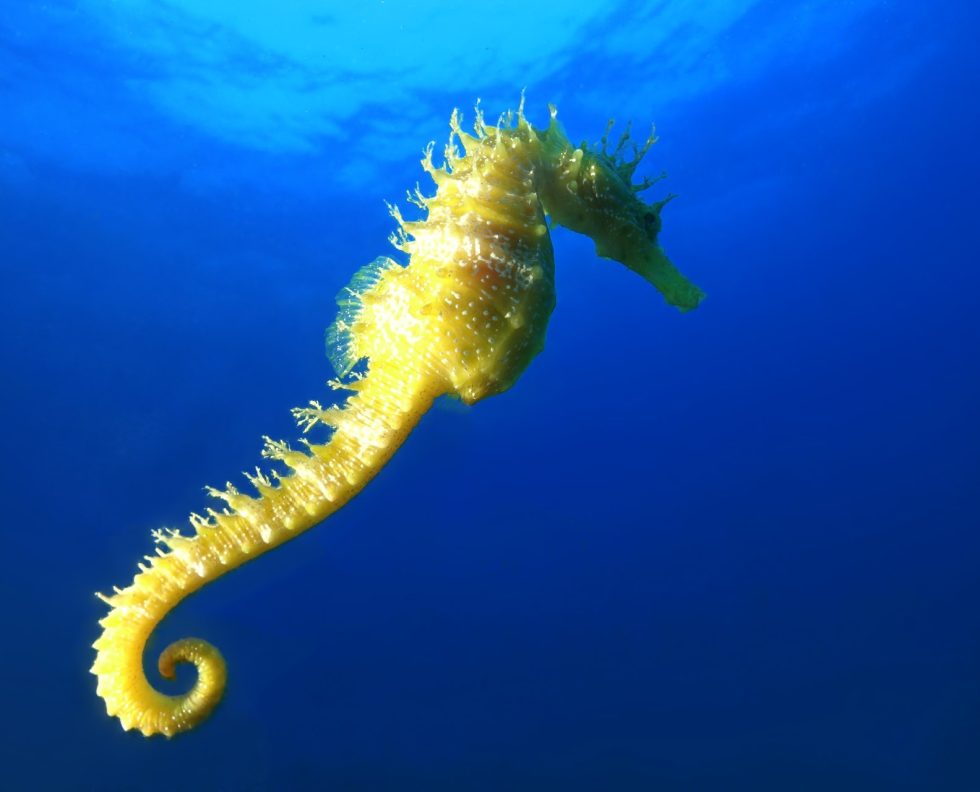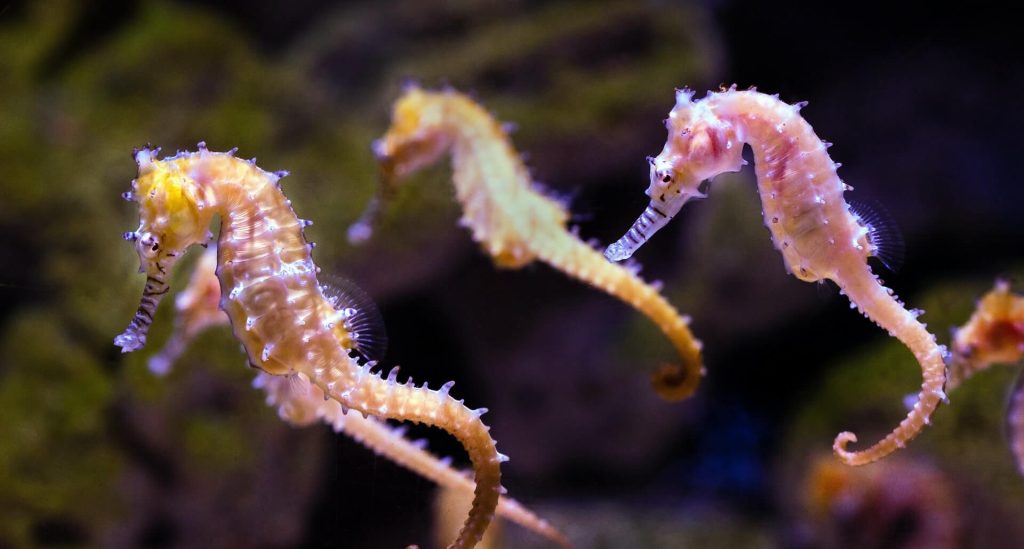Trivia: What kind of fish swims upright?
Answer: A seahorse


The scientific name Hippocampus, a seahorse, comes from Greek, meaning “horse of the sea.” They are part of the Syngnathidae family, pipefish, and sea dragons. Seahorses’ distinctive features include a prehensile tail, bony plates on the skin instead of scales, and a tubular snout.
There’s no other fish on earth that swims upright, and seahorses can easily be recognized. They maintain their unique swimming style because of the way they have evolved. Seahorses don’t have a caudal fin, which lets them move very slowly but is also an advantage for them as it makes them harder to spot predators.
The most unusual feature is that they have flexible necks. Seahorses swim upright due to their anatomy, which includes the position of the head and the location of gill openings. The seahorse has evolved to swim upright because it allows them to stay close to places where food sources are abundant. Seahorses mainly depend upon slow movement and camouflage for their protection from predators.
Their prehensile tails also make them easier to grip on seaweed or seagrasses. Seahorses can change color when they need to blend in with their surroundings; this is a suitable defense mechanism against predators and a camouflage tactic. Although seahorses are related to pipefish and sea dragons, they share a very different appearance.
Seahorses’ average lifespan is between 5 and 10 years. Seahorses don’t have scales but bony plates on their skin to protect them from predators. They feed on small invertebrates such as shrimp, zooplankton, and some insects floating in the water column. Seahorses mate for life, and they use an unusual reproductive method known as “male pregnancy.”
The female deposits her eggs in the male’s trunk, fertilizes them internally, and carries the developing embryos until they are born. It is estimated that only 2 to 10 babies survive from each brood. Baby seahorses start their life as tiny versions of their parents, and within a few weeks, they live off other plankton in the ocean.
They’re not very easy to find in aquariums because they require specific temperatures, ways of feeding, and tank size, making them very expensive. Swimming upright, they help themselves camouflage by matching their color with surrounding seaweed or algae where they stay still most of the time. Seahorses swim only when necessary to get food, find a mate, or escape predators.
They can be found in shallow waters around seagrass beds and coral reefs in many parts of the world, including Australia, New Zealand, and the west and east coasts of North America. Seahorses need gentle water with little current, and their habitats are threatened by coastal development, pollution, and overfishing. Some species of seahorses may be at risk of extinction due to loss in coral reef habitat or from bycatch in shrimp trawls.


